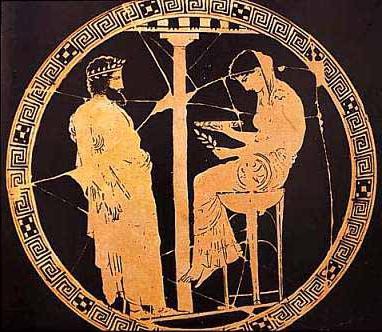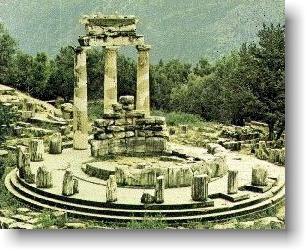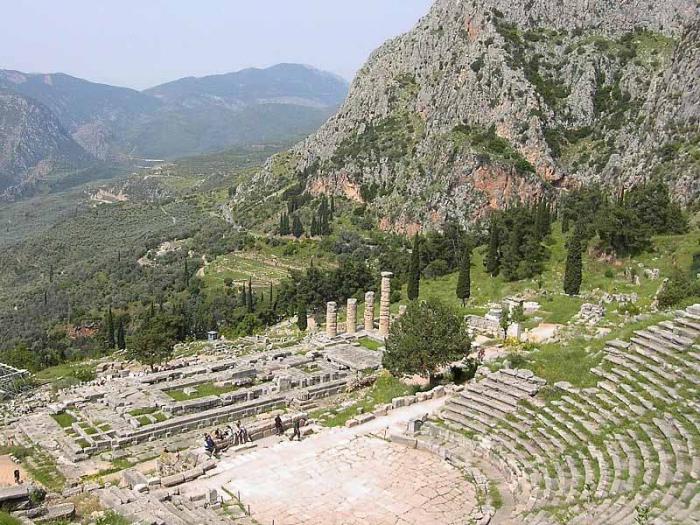The town of Delphi in Greece is now a tourist center, but two thousand years ago it was by no means tourists, but numerous pilgrims who came here. They landed from the ships and climbed the mountains, where among the sacred olive grove stood a sanctuary dedicated to the sun god Apollo. According to legend, in this place the son of Zeus killed the dragon Python, who guarded the cleft, giving people the gift of prophecy. Since that time, special priestesses - named after the dragon Pythias - have prophesied people their fate and answered questions regarding the future. There were many such shrines in ancient Greece, but the most revered was the temple of Apollo at Delphi.

It is located at the foot of Mount Parnassus. Since this place was revered from the third millennium BC. Until the 4th century AD, there are many references to it and the order of prophecies operating in the oracle complex. All chroniclers claim that the temple of Apollo stood above the crevice, from which underground gases rose. The priestesses were accepted only girls who had the gift of prophecy. While they performed their pythian functions, they adhered to the vows of chastity, and only then, leaving the service, married.
A visitor brought a gift to the temple and asked his question, which was recorded on a wax tablet. Found in huge numbers and belonging to different times, they indicate that the pilgrims were interested in the same dilemmas: does the spouse cheat, can one rely on a particular person and whether this or that trading operation will bring benefits. The Pythia, having previously bathed, went down to Aditon - an underground chamber under the base of the temple - and sat on a tripod. She inhaled the vapors and fell into a trance. Her incoherent speech was interpreted by the Delphic oracle - a special priest, guessing the divine prophecy in a strange murmur of the priestess.

But archaeological excavations conducted on this site since the 19th century did not reveal any cracks under the temple. Scientists Adolf Oppe and Pierre Amandry in their articles stated that the Pythia, divination and the Delphic oracle are nothing more than a large scam that lasted several centuries, as a result of which the priests of the temple profited from the innocence of pilgrims. However, in the case of the Temple of Apollo in Delphi, a rare situation occurred when modern science did not refute, but confirmed the myth of miracles happening in the sanctuary.
In the 1980s, volcanological studies of formations occurring in this place were carried out. It was found that the faults through which the products of magmatic activity could rise pass from the east and west straight to the place where the Pythia sat and where the Delphic oracle answered questions. The Aditon room was 2–3 meters below ground level, as if it were designed to catch and hold the gas coming from the crevice. But what was the substance that drugged the priestess and put her into a trance?

Plutarch mentions that the "pneuma" breathed by the Pythia had a sweet smell. As far back as the 1920s, chemist Isabella Herb found that a 20% solution of ethylene makes a person unconscious, and a weaker dose causes a trance state. Higgins archaeologists in 1996 suggested that the voice of the gods, which was announced by the Pythia and proclaimed the Delphic oracle, was inspired by ethylene vapors mixed with carbon dioxide. The scientists pushed to this conclusion by the study of another Apollo temple in Hierayolis (Asia Minor), where this mixture still penetrates from the earth to the surface. In Delphi, after several major earthquakes, the cleft closed and the "source of revelation" dried up.